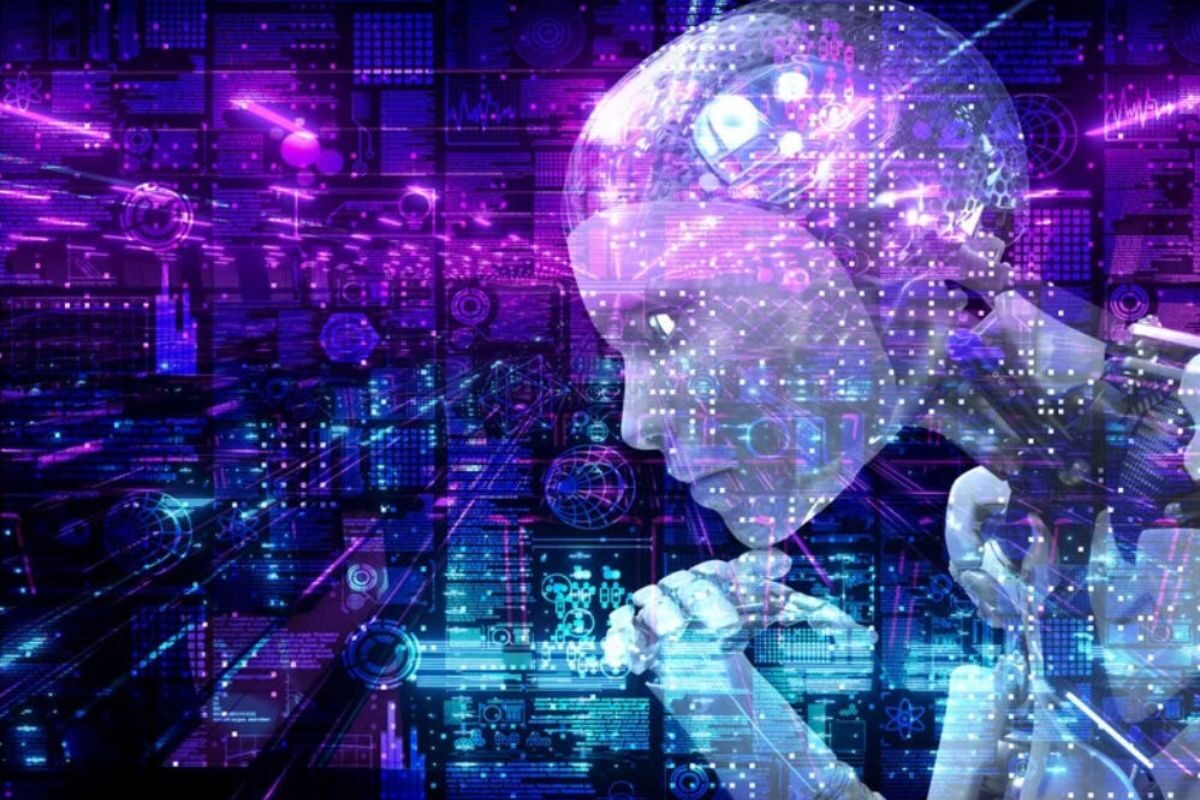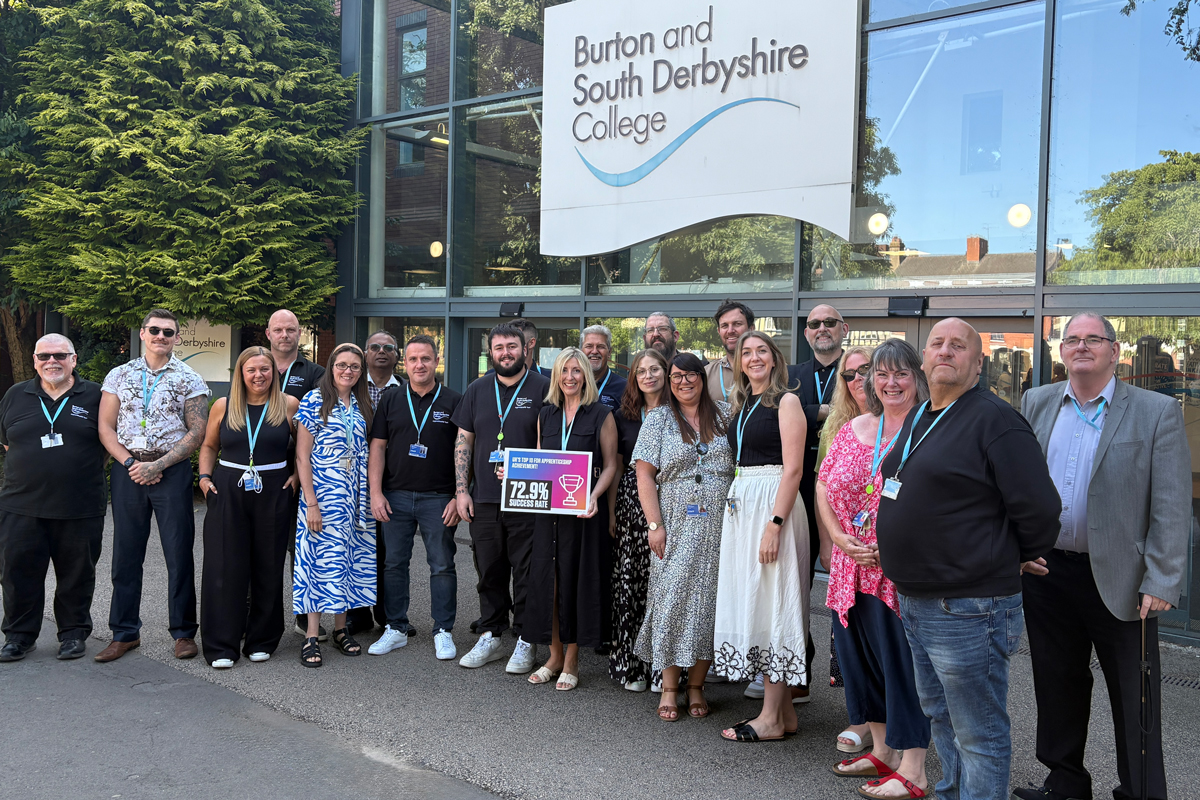Digital Learning: The Future of Education

Exploring the Impact of Artificial Intelligence on the Future of Education: The Good, The Bad and The Ugly


As an educator, I’ve always been captivated by the intersection of technology and education. I am constantly on the lookout for new and exciting ways to engage my students and enhance their learning experience. And let me tell you, the future is looking bright! With the rise of digital learning and the incorporation of Artificial Intelligence (AI) in education, the possibilities are endless.
But before we dive into the nitty-gritty of how AI is revolutionizing education, let me tell you a little bit about how I came to be so fascinated with this topic. It all started with a LinkedIn post I came across, discussing the impact of digital learning on the future of education. This got me thinking about the future of education and the role of technology in it. I couldn’t help but wonder, what does digital learning look like? If I were designing a curriculum for the future, what aspects of digital (and non-digital) learning would I incorporate? And how can we use technology to make learning more engaging and interactive? In this blog, I want to explore these questions and share my thoughts on how we can use technology, specifically AI, to enhance the educational journey of students.
The Evolution of Education
We’ve come a long way from the days of chalkboards and textbooks. The world is changing rapidly, and education needs to keep up. With the rise of technology, the way we learn has also changed. The incorporation of digital learning in the classroom has brought about a whole new level of engagement and interactivity for students. But, it’s not just about incorporating technology for the sake of it. It’s about finding the right balance between digital and non-digital learning to enhance the educational journey of students.
Examples of Digital Learning in the Classroom
One example of digital learning in the classroom is the use of online quizzes and assessments. These tools allow teachers to quickly and easily assess student understanding and provide personalized feedback. For example, using a platform like Kahoot, teachers can create interactive quizzes that students can take on their own devices and receive instant feedback.
“Effective communication is 20% what you know and 80% how you feel about what you know.”
Stephen Covey
Another example is the use of digital textbooks and interactive e-books. These resources provide students with multimedia-rich learning experiences, including videos, animations, and interactive activities that can help to engage and motivate students. Digital learning also allows for blended learning, where students can learn at their own pace and get tailored instruction, with the use of adaptive learning software. This software adapts to the student’s learning style and adjusts the instruction accordingly, such as ALEKS, Knewton, and Carnegie Learning.
The Good, The Bad, and The Ugly
Let’s start with the good. Digital learning has the potential to make education more accessible and personalized for students. With the use of technology, students can access a wealth of information at their fingertips, allowing them to learn at their own pace and level. And let’s be real, who doesn’t love a good interactive game or virtual field trip? But, as with any new technology, there are also challenges. One major concern is the potential for digital distractions, such as social media and online games, to take away from the learning experience. And let’s not forget the dreaded “tech overload” where students (and teachers!) can become overwhelmed with the constant bombardment of information and notifications. Now, the ugly. Despite the challenges, digital learning is here to stay and is only going to continue to grow in popularity. As educators, it’s our job to find ways to leverage the power of technology to enhance the learning experience, while also addressing the potential downsides.
Designing a Curriculum for the Future
When designing a curriculum for the future, it’s important to consider the different aspects of digital learning that can be incorporated. From virtual reality to online resources, the possibilities are endless. For example, virtual reality can be used to transport students to different parts of the world or even different time periods, making history come alive in a whole new way. Online resources like videos, simulations and quizzes can be used to supplement traditional instruction and cater to different learning styles. But, it’s not just virtual reality that’s making waves in the world of education. Artificial Intelligence (AI) is also playing a big role in shaping the future of education.

The Future is Here: How AI is Transforming Education
“We are currently educating people out of jobs that don’t yet exist, using technologies that haven’t been invented, in order to solve problems, we don’t even know are problems yet.”
Sir Ken Robinson
This statement highlights the importance of preparing our students for the future and equipping them with the skills they need to succeed in an increasingly digital world.
One way we can do this is by incorporating AI into our curriculum. AI has the potential to revolutionize education by providing personalized learning experiences, automating administrative tasks, and even grading assignments.
Another example of AI in education is through the use of AI-powered personal tutors. These tutors can analyse a student’s learning style and adjust the teaching methods accordingly. They can also provide real-time feedback, helping students to better understand and retain the material.
AI can also be used to grade essays and assignments. This not only saves teachers time but also provides students with more timely feedback. With the help of AI, we can now make the learning experience more efficient and effective, which can lead to better outcomes for the students.
Another example is the integration of AI-powered chatbots. These can be used to assist students with homework and answer their queries, and to provide instant feedback on their work.
Examples of AI in the Classroom
Personalized Learning: One of the biggest benefits of AI in education is its ability to personalize learning. By using data and machine learning algorithms, AI can adapt to the needs of each individual student and provide customized learning experiences.
For example, Knewton, an AI-powered learning platform, uses data on student performance to create personalized lesson plans for each student.
Automating Administrative Tasks: Another way AI can be used in education is by automating administrative tasks such as grading assignments, providing feedback, and even generating lesson plans. For example, Gradescope, an AI-powered grading tool, uses machine learning algorithms to grade assignments, providing teachers with more time to focus on teaching.
Creating Interactive Learning Experiences: AI can also be used to create interactive and engaging learning experiences. For example, AI-powered chatbots can be used to provide students with instant feedback, answer questions, and even provide personalized tutoring.
Edtech Companies and Partners
Of course, none of this would be possible without the help of innovative Edtech companies and partners. Some of the leading companies in this space include:
- Knewton: which provides personalized learning experiences
- ALEKS: an AI-powered learning platform
- Blackboard: which offers a wide range of digital learning tools and resources
- Duolingo: which provides a gamified language learning experience
- ChatGPT: an AI-powered chatbot.
These companies and many more are pushing the boundaries of what is possible in education and we should be grateful for their contributions.
As more and more companies and organizations invest in AI research and development, we can expect to see even more innovative and cutting-edge tools and technologies that will help us to enhance the educational journey of students.
However, it’s important to remember that AI is not a magic solution and should be used in conjunction with traditional teaching methods.
Balancing Digital with Non-Digital
As much as I am a proponent of technology in the classroom, I also believe that there is value in traditional, non-digital learning methods. It’s all about finding the right balance between the two. While technology has its place in the classroom, it’s important to remember that it’s not the only solution. Traditional teaching methods like lectures, discussions, and hands-on activities still have a valuable role to play in education. It’s about finding the right balance between digital and non-digital learning to create an engaging and interactive curriculum that caters to different learning styles.
“Technology is just a tool. In terms of getting the kids working together and motivating them, the teacher is the most important.”
Sir Ken Robinson
Conclusion
In conclusion, I believe that AI has the potential to revolutionize education and enhance the learning experience of our students. By incorporating AI into our curriculum, we can provide personalized learning experiences, automate administrative tasks, and create interactive and engaging learning experiences. However, it’s important to remember that AI is just a tool and should be used in conjunction with traditional teaching methods to create a well-rounded and effective educational experience.
References
- ALEKS. (n.d.). ALEKS: Adaptive Learning & Assessment. https://www.aleks.com
- Carnegie Learning. (n.d.). Carnegie Learning: AI-Based Math Curriculum. https://www.carnegielearning.com/
- Duolingo. (n.d.). Duolingo: The World’s Best Way to Learn a Language. https://www.duolingo.com/
- “EdTech and the Future of Education” by eSchool News https://www.eschoolnews.com/2019/02/22/edtech-future-education/
- Gradescope. (n.d.). Gradescope: AI-Assisted Grading. https://www.gradescope.com/
- Knewton. (n.d.). Knewton: Adaptive Learning Technology. https://www.knewton.com/
- OpenAI. (n.d.). OpenAI: Artificial Intelligence for Everyone. https://openai.com/
- Robinson, K. (2006). The Element: How Finding Your Passion Changes Everything. Penguin.
- “The Role of Artificial Intelligence in Education” by EdTech Magazine https://www.edtechmagazine.com/higher/article/2018/08/role
- November, A. (2018). Empower: What Happens When Students Own Their Learning. International Society for Technology in Education.













Responses